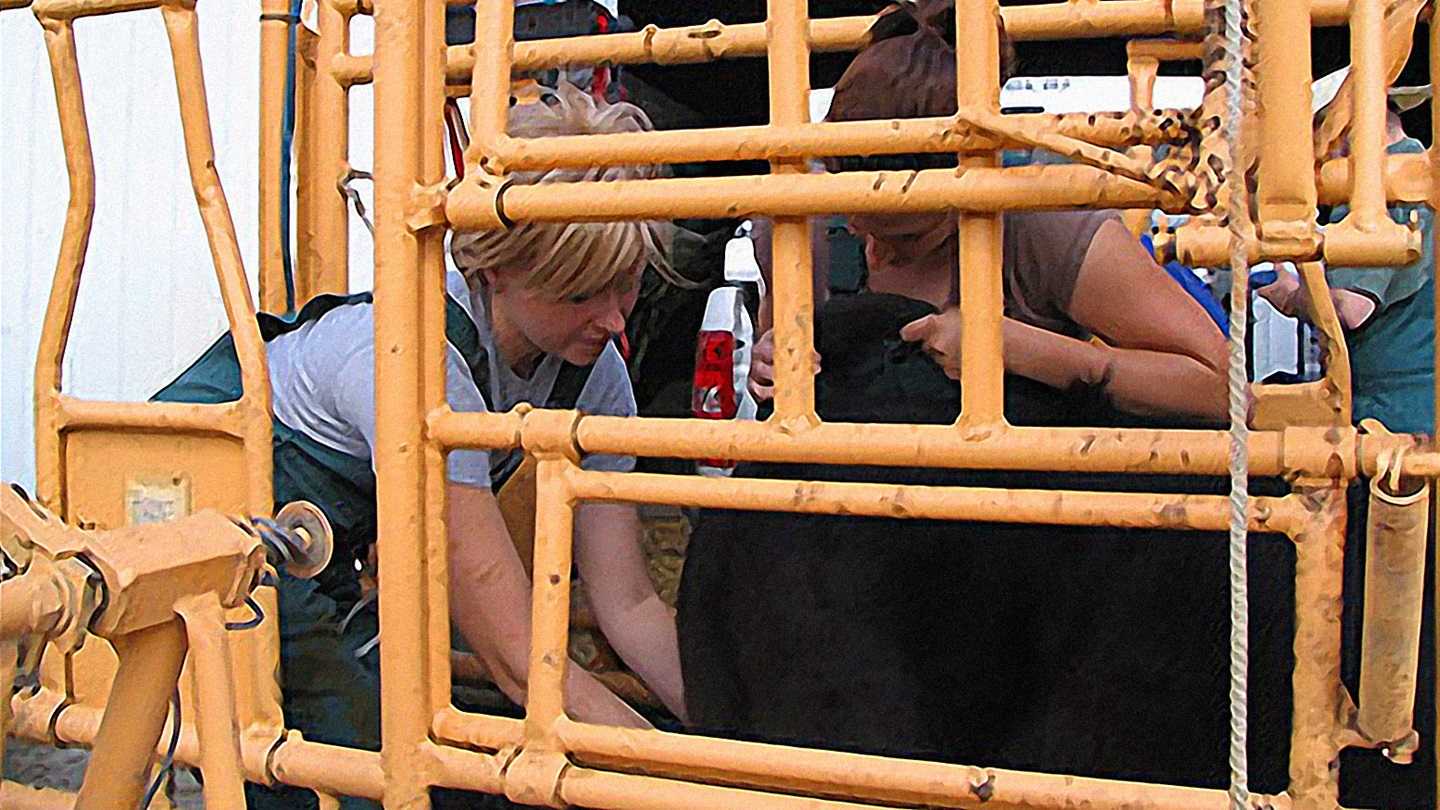Castrating Larger Calves
The pros and cons of banding larger calves.
November 20, 2014

In some situations it is necessary to castrate large bull calves that come into a feedlot intact, or the low end of a group of young bulls that a seedstock producer was originally hoping were bull prospects. Ranchers and veterinarians often debate whether it’s best to band or cut these large calves.
There are several tools and methods for banding large calves. According to Randall Raymond, director of research and veterinary services at Simplot Livestock, all of them work reasonably well. “The advantage on larger calves in a confined situation is that you don’t create an open wound if conditions are muddy and dirty or there are lots of flies,” he says.
There are several challenges when banding older calves.
“Cattle are vulnerable to tetanus, and you create an area of the body where there is no blood supply, which tetanus loves. It is critical to give a tetanus shot when using these methods,” says Raymond, noting it is a good recommendation when using an elastrator band on small calves too. “We don’t see tetanus as often in that age group (compared with large calves), but it is still a risk.”
Other challenges to considering when banding include making sure both testicles are in the scrotum and making sure the band is tight enough to completely block off all blood supply, but not so tight as to damage above the area you want to fall off, he explains. If the band breaks or is not tight enough, there will not be complete loss of blood supply to the testicle. This can cause problems.
“Another challenge is that the large testicles will swell and become very big. We like to make two small incisions (after we put the band on) at the bottom of the scrotum — one over each testicle. This allows fluids to drain and facilitates atrophy and shrinking of the testicles. In some extreme cases, we may have to restrain the calf again and open those drainage ports two or three days later. If testicles are very large, once they start to dry up we surgically remove the scrotum and testicles, just below the band.”
After this dead tissue is removed, the area heals faster with less potential for additional problems. “We feel there is stress on the immune system with that tissue as it dies — if it stays there too long when the body is trying to get rid of it. It helps to remove this necrotic tissue,” he explains.
“If banding is done correctly, and blood supply is completely eliminated, this can be a fast, effective and clean method to castrate big calves. We’ve done some work looking at the effects on these calves, such as the time it takes for them to get back on feed, versus cutting them and using an emasculator. The two groups had very similar results for time back on feed,” says Raymond.
“Five years ago I would have said banding causes a more sustained pain in big calves and that they feel that procedure longer than when castrated with a sharp knife. More recent data suggests this is probably not the case,” he says. “Once the blood and nerve supply to the scrotum and testicles is eliminated, nerve function is compromised; pain sensation in that area is gone. Feed intake studies tend to support this conclusion. In our hands, the time back to full feed is similar for both methods if done correctly.”
The advantages to banding are that it is clean and there are no open wounds, with less risk for hemorrhage. The disadvantage, with large testicles, is that probably some additional management will be necessary for drainage and removing the necrotic tissue if it doesn’t fall off in a timely manner.
Editor’s Note: Heather Smith Thomas is a cattlewoman and freelance writer from Salmon, Idaho. [Lead photo by Carrie Spader.]
November 20, 2014 | Vol. 7 : No. 11
Topics: Animal Handling , Health , Management
Publication: Angus Beef Bulletin


